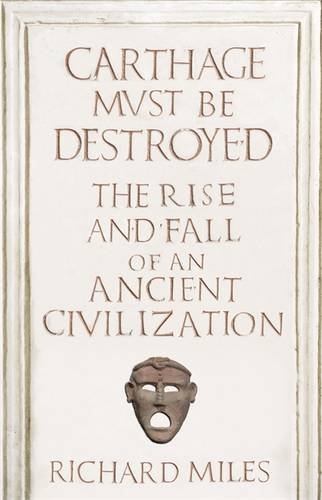Carthage Must Be Destroyed
In the 3rd and 4th centuries before Christ, Carthage was a powerful city state on the North African coast. The author begins by setting the Carthaginians in a broad historical context, recreating the late Bronze Age world in which Greeks, Phoenicians and Etruscans vied for mercantile supremacy in the Mediterranean.
The date of Carthage’s traditional foundation is 814 bc, after which more than three centuries of trading and expansion follow before the first treaty with Rome in 509 bc. This part of the story includes several vignettes, such as that of the Carthaginian general Himilco, who starved himself to death in penance for the loss of the city of Syracuse. The second half of the book deals with the Punic wars. The narrative here is well-paced and compelling, describing critical aspects of the story of Carthage. The surprising failures of Carthage – often seen as the era’s maritime power – in the naval battles of the first Punic war are ably detailed. The rise of the Barcids – the family of Hannibal – is given due prominence, as is their construction of a semi-autonomous empire in Spain. The descriptions of Hannibal’s campaign against Rome, his victories at Lake Trasimene and Cannae, his defeats, ultimate failure, and suicide in Bithynia are skilfully portrayed. Finally, there is the tragic denouement of the third Punic war – the destruction of the city’s fortifications and the cursing of the site – a conflict engineered by Carthage-haters such as the Roman orator Cato, who ended all his speeches with the demand that Carthage must be destroyed (‘delenda est Carthago’).
Drawing on a wealth of new archaeological research, Richard Miles brings the story of the rise and fall of Carthage alive in a form which will appeal to both scholars and general readers alike. Recommended.










